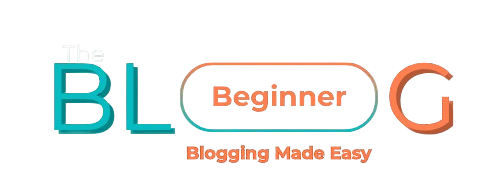Essential WordPress Tutorials for Beginners: How to Manage, Edit, and Customize Your Blog with Confidence
Table of Contents
So you’ve installed WordPress.
Now what?
If you’ve opened the dashboard and felt lost — you’re not alone.
This guide is for absolute beginners who want to learn the most important WordPress tasks:
Writing posts, editing pages, managing comments, changing themes, and more.
Let’s walk through the basics — step by step — so you can run your blog with confidence 🧑🏫💡
🧭 1. The WordPress Dashboard: What You’re Looking At
Once you log in to yoursite.com/wp-admin, you’ll see:
- 📄 Posts – write and manage blog articles
- 🧾 Pages – create static pages (About, Contact, etc.)
- 🎨 Appearance – customize your theme
- 🧩 Plugins – add/remove features
- 🧑💼 Users – manage who can log in
- 💬 Comments – approve, delete, or reply to blog comments
- ⚙️ Settings – control how your site works
📌 Pro Tip: Use the “Screen Options” tab (top right) to hide unused widgets.
✍️ 2. How to Add a Blog Post
- Go to Posts → Add New
- Enter your title
- Use blocks to add paragraphs, images, headings, etc.
- Set a featured image (right-hand sidebar)
- Choose a category
- Click Publish
📌 Need writing help? Read: Writing Tips for Bloggers
📄 3. How to Create Pages
- Go to Pages → Add New
- Add a title (e.g., “About”)
- Use blocks for content
- Publish
Use for:
- 🏠 Home
- 📬 Contact
- 👤 About
- 📃 Privacy Policy
- 🧭 Sitemap
📌 Example: Contact Page Optimization
🧩 4. How to Manage Plugins
- Go to Plugins → Add New
- Search for a plugin (e.g., “Rank Math SEO”)
- Click Install then Activate
- To remove: Go to Installed Plugins → Deactivate → Delete
📌 Keep your plugin count low for faster performance.
🎨 5. How to Customize Your Theme
Go to Appearance → Customize to:
- Upload your logo
- Change colors and fonts
- Edit header and footer
- Adjust homepage layout
Each theme has different options, but most follow this structure.
📌 We recommend using Blocksy for full control and speed.
🧭 6. How to Create Menus
- Go to Appearance → Menus
- Create a new menu (e.g., “Main Menu”)
- Add pages, posts, or categories
- Assign it to a location (like “Header” or “Footer”)
- Save
📌 Tip: Use Max Mega Menu plugin for advanced menus.
💬 7. Managing Comments
- Approve or delete comments from Comments section
- Mark spam using Akismet or Wordfence
- Reply directly if needed
To reduce spam:
Use reCAPTCHA v2 with Contact Form 7 or comment box.
🧰 8. Widgets & Sidebars
Go to Appearance → Widgets or Customize → Widgets
You can add:
- Search bar
- Recent posts
- Categories
- Custom HTML or text
- Newsletter sign-up box
📌 Clean sidebars = better user experience.
🧼 9. How to Clean Up Your Site
Remove:
- Default sample post (“Hello World”)
- Default sample page
- Unused plugins or themes
- Unused categories or tags
📌 This makes your blog lighter, faster, and more professional.
✅ Final Thoughts
WordPress may look complex at first — but it gets easier with practice.
You don’t need to learn everything. Just the essentials.
Focus on:
- Writing and publishing
- Basic design
- Staying organized
- Using helpful plugins
📌 Next up: Having issues with WordPress? Let’s fix them in our → Troubleshooting & Fixes Guide
